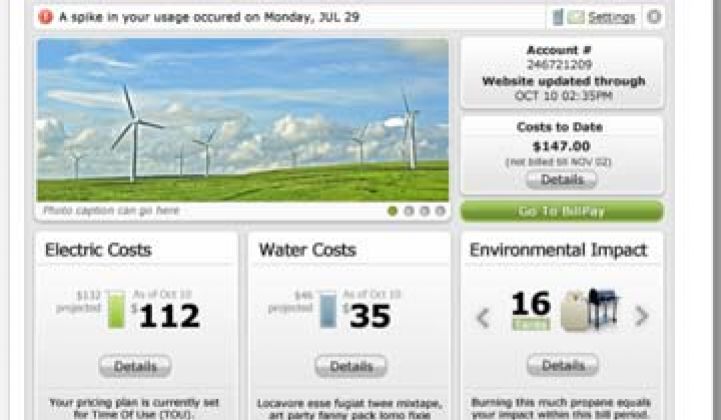When Burbank Water and Power (BWP) was shopping for a meter data management platform about three years ago, it was crucial that the system could serve all of the utility, which meant both water and electricity. The water smart metering project was also moving along faster than the electric side, so the utility couldn’t wait for companies to invent water offerings.
The municipal utility chose eMeter, which was one of the very few MDM providers that was moving into the water space at the time. “Most [vendors] hadn’t even gone toward water and weren’t really interested in water,” said Teri Kaczmarek, manager of customer service operations for BWP.
By integrating water into its EnergyIP platform, eMeter is well positioned to be attractive to the muni and cooperative utility market, which everyone seems to be pursuing in 2012 as the large investor-owned utilities' smart grid plans slow down. The company is positioning its platform as one-stop shopping for munis because it can work with gas, electricity and water and across different meter vendors.
The offering will also help eMeter, which was recently acquired by Siemens, position itself in the global market. “The water piece to me is one of the growing trends in this AMI space,” said Aaron DeYonker, Vice President of Product Management for eMeter. “As we push in areas like the Middle East, it will be a basic requirement.”
Even before an international push, the need for water management in California, the Southwest and even the Southeast is hitting a tipping point. BWP brought the EnergyIP platform online in August 2010, during a time of strict conservation measures in California.
Although it’s hard to quantify how much savings can be attributed to the MDM, Kaczmarek said the platform has been a great tool. The utility can monitor data and see when usage spikes because of anything from a faulty pressure valve to a leaky sprinkler.
The MDM allows BWP to catch problems much sooner and alert customers, most of whom are grateful for the notification that something needs fixing. Later this year, BWP will start launching its web portal so customers can view and track their own water data.
Other areas of the country aren’t far behind. DeYonker noted the droughts in Georgia, not to mention the overall issues inherent in the dated U.S. water system. Smart water meters can help confirm how much water is actually getting to end points, and for areas with conservation measures, they can also help enforce compliance.
For the utilities, smart water meters also can serve a more basic function. Unlike electricity meters, water meters wear out due to buildup. The new meters can help a utility pinpoint when a meter has reached the end of its lifecycle, rather than depending on averages to know when a meter is spent.
Utilities can also use the AMI system and data from the MDM to get a baseline of the distribution infrastructure and then make the case for specific improvements, which is something BWP will be using the system to achieve.
There are also incredible synergies that could come from the system, according to DeYonker. Pumping water takes a tremendous amount of electricity, and having one seamless MDM platform that could ensure water is being pumped to optimally match electric supply and demand could drive further efficiencies for municipalities.
DeYonker said that none of the company's early water customers, which also include Kansas City Board of Public Utilities (that's Kansas City in KS, not MO), are using the system for that yet, but it could be a future application.
Currently, eMeter’s EnergyIP water platform is primarily an auditing tool. But measuring the system is no small feat, especially as cities grow and water supplies dwindle in many parts of the world. “Siemens has a pretty clear eye on 10, 20, 30 years out, where they really focus on these mega-trends,” said DeYonker. “We’re just seeing areas that maybe never thought about [water before] getting very concerned.”



